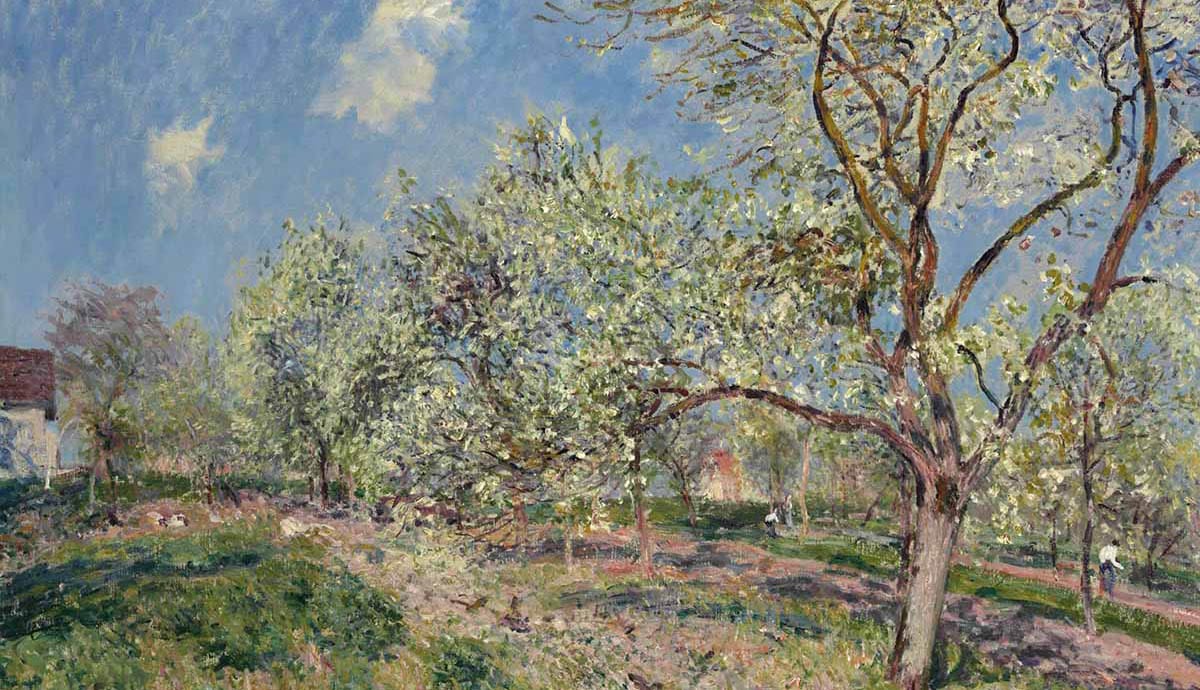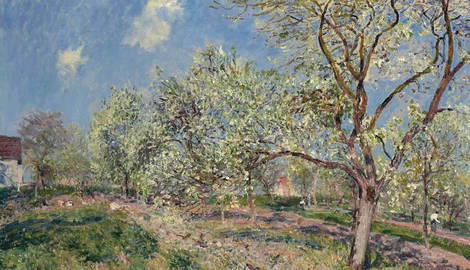
The Impressionists were forced to go through hell and back to be taken seriously. It wasn’t easy, but they managed to break through, inspiring future art movements that would turn the art world on its head. The movement’s back story is often shadowed by the scepter of Claude Monet. Sure, the movement is named after one of his paintings, but there’s a lot we don’t know about the others. Let’s get to know them better. Here are 10 things you did not know about the Impressionists.
10. Impressionists Were Big Fans Of Edouard Manet

Edouard Manet had been instrumental in introducing modernism to Paris when they were a little too fixated on realist ideals. He didn’t dabble in Impressionism but he sure did help the movement along. The young impressionable Impressionists were pretty keen on hearing what he had to say.
Manet’s studio was situated close to the popular Café Guerbois, one of the many cafes on the artist’s circuit. He and his ardent followers would meet up at least twice a week to discuss the future of painting. Among his posse, you could easily spot Claude Monet, Edgar Degas, Pierre-Auguste Renoir, Alfred Sisley, Frederic Bazille, Camille Pissarro, and others.
He taught them the alla prima technique, also known as all-at-once painting, or the wet-on-wet technique. This was quite a breakthrough for the Impressionists. They could now paint faster than before and quickly capture the “impressions” that seized them.
9. They Weren’t Called Impressionists Out Of Respect

Even though the movement can find its origin in the 1860s, it didn’t have a name until about 1874. At the time they were calling themselves the Anonymous Society of painters, sculptors, and printmakers. The Paris Salon hadn’t exactly been welcoming of the new paradigm shift that the society had been proposing. After multiple rejections, these artists decided to mount their exhibition in 1874.
Art critic, Louis Leroy wasn’t impressed. In a satirical article he wrote, he said that wallpapers looked more complete than the paintings at the exhibition. He mockingly called them Impressionists, derived from Monet’s Impressions, sunrise. However, the artists found that it encapsulated their movement perfectly and ran with it. Leroy’s joke became their reality. Thanks to him, the Impressionists were able to turn their frowns upside down.
8. Most Of Them Met In The Studio

An unlikely bunch of aspiring painters came together at Charles Gleyre’s studio in Paris in 1862. Frederic Bazille was a medical student who truly wanted to be an artist. Claude Monet was disowned by his rich father because all he wanted to do was paint. Alfred Sisley had studied business in London, but he’d returned to Paris to work his paintbrush. Pierre-Auguste Renoir was luckier on the home front, he didn’t meet much resistance when he decided on his painting career. The four young men became the founding fathers of Impressionism.
Gleyre may have brought them together, but within 5 months they abandoned their teacher for the countryside. They found that they got a lot more work done when they were outside. All four gentlemen worked together, swapping notes, and inspiring each other. Impressionism found its vanguards in the humble studio of Gleyre.
7. Some Of Them Fought In The Franco Prussian War

In 1870, the Prussian king, Wilhelm I, had had enough of countries like France and England. They had too much power and he wanted some of that too. Napoleon III didn’t take Wilhelm’s threats seriously. It was a monumental mistake. The Germans united under Prussia were formidable.
Numerous French artists signed up to defend their home country. Manet, Degas, and Auguste Rodin were called up by the National Guard. Bazille and Renoir were enlisted in light infantry. The former was slain on the frontline. Renoir, on the other hand, witnessed little action and came out of the war with a bad case of dysentery.
6. Some Escaped The War Of 1870

Some Impressionist artists were lucky enough to avoid the gory fate that met their friends. Monet and Pissarro fled to London with their families. Paul Cezanne escaped to the French countryside. Sisley was an Englishman, so he returned to London with his mistress and their daughter.
The movement would scarcely have been possible if these artists did not survive. To be fair, some of the artists who fought survived the carnage as well. However, those who fled had families to think about.
Paul Durand-Ruel, the first art dealer to ever give the Impressionists the light of day, sought refuge in London during the war. He met Monet and Pissarro there.
5. They Liked Bridges

France was going through its second Industrial revolution in the 19th century. The Impressionists found themselves smack in the middle of it. As a growing modern movement, they took to painting a changing modern landscape. Paris was growing fairly fast, and they had courtside tickets to watch the game.
Bridges weren’t a modern innovation. Industrial-age bridges, however, were something else. They symbolized the growth of the nation, and the Impressionist painters were mesmerized. They were excited about what the future had in store for them. Nostalgia is not what they were going for.
Monet, Pissarro, Cezanne, Sisley, were a few Impressionist artists who took to the symbolism. They painted a lot of bridges throughout their artistic careers. They were under bridges, above bridges, on bridges, you name it. For them, art wasn’t about the finer things in life. It was about the life of the many as opposed to that of the few. The bridge may have meant little to the bourgeoisie, but it was more than a lifeline for workers of Paris.
4. Painters Doubled As Models

Women are to art what yellow is to a banana. Sure bananas come in different colors, but you’ve seen more yellow bananas duct-taped to a wall than any other. Impressionism wasn’t the first art movement to feature female artists. Even before its time, women were already playing the game.
Berthe Morisot, Mary Cassatt, Eva Gonzales, Suzanne Valadon, Camille Claudel, are just a few artists who broke into this man’s world. Some of them were often featured in their colleagues’ work. Morisot would pose for Manet, Valadon would pose for Renoir, and Camille for Rodin. They were a cute community of artists who realized they could cut costs by having a friend model for free.
These women were serious painters, some of them taught themselves, and some made it through art school. The Academy was pretty strict about the role of women in art, they wanted it to be minimal. The art school route was petty treacherous. Because Impressionism was fighting the academy, it made its own rules. So while Impressionism wasn’t the first modern movement to have women artists, it had a higher female acceptance rate.
3. They Were Looking To The Far East For Inspiration

Japanese woodblock prints were a guilty pleasure for many, back in the day. Artists collected them, studied them, let it flow into their work. It was exotic to the West. It unknowingly opened their eyes to a new kind of aesthetic.
Ukiyo-e was a painting style that blossomed for about 200 years from the late 1600s in reclusive Japan. By the time the Impressionists got wind of it, the practice was on its way out in Japan. Yet it left an indelible mark on the works of the Impressionists. The prints were so different from anything they had seen before. Monet even designed a Japanese bridge in his retirement garden. Word is that he had to fight for the garden with his neighbors.
2. The Impressionists Loved Hanging Out At Cafes

Impressionism thrived outside the conventional art world, the powerful nexus of the Academy and Salon. The movement still needed frequent meetings and debates to proliferate its teachings. The informal lecture hall of this school of art were the many bars and cafes speckled throughout suburban Paris.
Maxim’s de Paris, Cafe des Ambassadeurs, and Follies Bergere were some of the more popular Impressionist haunts. They talked, fought, worked on their paintings, all out of the comfort of their humble neighborhood café.
Café Guerbois is where Manet initiated the tradition. Eventually, they started hanging out at Café de la Nouvelles Athenes. Manet, Degas, and Toulouse-Lautrec, all three took a stab at painting Café des Ambassadeurs. Monet, Pissarro, and Sisley made it to Munier’s restaurant for dinner on Wednesdays. Their successors, the post-impressionists, like van Gogh and Paul Cezanne, took a huge leaf out of that book.
1. They Vacationed In Cities To Get Away From The Countryside

Rapid industrialization, and overcrowding in the cities, forced the Impressionists to seek refuge in the quiet rural landscapes surrounding Paris. Monet bought a house in Giverny and, Pissarro in Eragny, Renoir in Cagnes-sur-Mer. They probably wanted the quiet so they could paint. Maybe it got a little too quiet.
When they needed to revitalize themselves all they needed was a short trip. While you and I think it would be a good idea to get away from the hustle and bustle of city living, these artists thought quite the opposite. Pissarro would rent a room at a hotel in Rouen, for a few months every year. Renoir would visit Le Havre, and Monet kept going back to Honfleur.
All of us have got to blow off steam every once in a while. The Impressionists did more than that, they painted it too.










